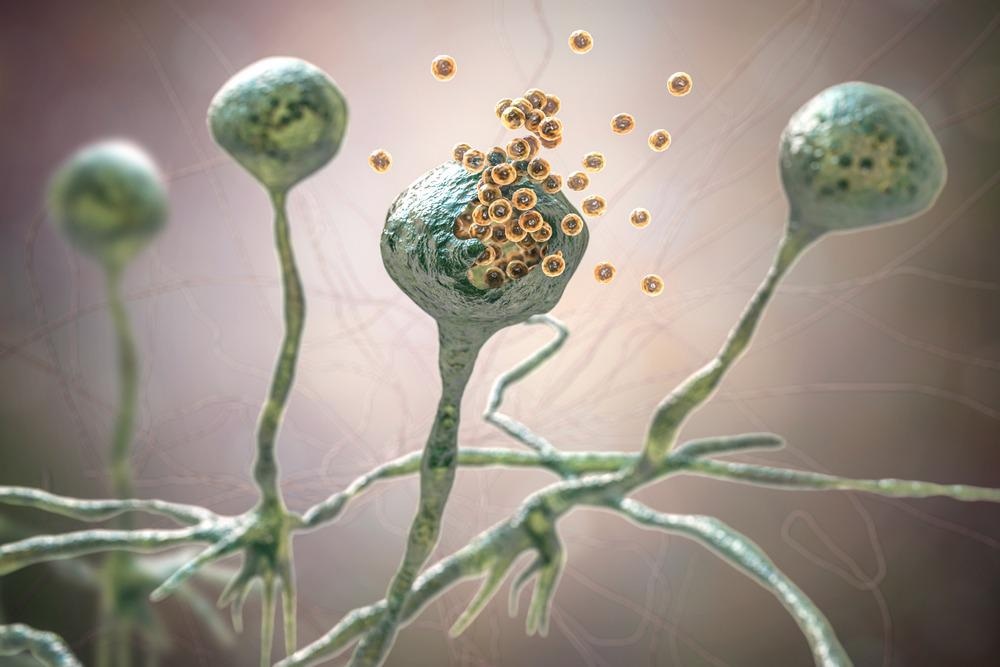In an article recently published in ACS Applied Electronic Materials, a simple method was discussed to detect the presence of a fungus known as Rhizopus stolonifer by means of electrochemical detection. The designed nanocomposites were tested for the detection of such fungi in tomato samples.

Study: Cu- and Sn-Codoped Mesoporous BaTiO3-G-SiO2 Nanocomposite for Bioreceptor-Free, Sensitive, and Quick Electrochemical Sensing of Rhizopus stolonifer Fungus. Image Credit: Kateryna Kon/Shutterstock.com
Food and Fungi – The Coexistence
Fungi are a significant component of the natural habitat and thus perform several functions concerning food: some are employed to produce food, others are used as sources, and yet others are responsible agents for spoiling food. Some fungi found in diet can even lead to detrimental health consequences.
Toxic chemicals generated by fungus or mold are known as mycotoxins. When ingested, absorbed via the skin, or breathed, they can be harmful to people. In more technical terms, Mycotoxins are secondary metabolites generated by microfungi that can infect humans and other animals, causing sickness and fatality. Even a small quantity of mycotoxin can harm animal or human health, potentially leading to severe consequences.
Rhizopus Stolonifer – The Black Bread Mold
An important and prevalent type of fungus found worldwide is known as Rhizopus stolonifer. Because it decomposes in soil, manure, and a variety of foods, it plays an important part in the carbon cycle. It can recycle ingredients such as starch and sugar, allowing it to reuse what has already been utilized
However, it accounts for nearly 80% of the total losses from Rhizopus rot in packed and loose tomato fruits. Extracellular enzymes are used by the mold to soak up nutrients and break down the substrates in which it thrives inside the food. Rhizopus stolonifer is a parasite that grows quickly and is self-centered, absorbing all of the minerals inside the substrate and leaving it without anything to consume.
It is a deadly mold that may be discovered on ordinary bread that we humans eat. This mold can induce illnesses in people in some situations. Should black bread mold be discovered on any form of bread in a home, or if mold is discovered on soft fruits, dispose of the item as swiftly as possible so as to prevent any direct exposure.
As fungi are readily found in food, it is of prime concern to be able to detect them so that contaminated food can be separated from safe food and many diseases and deaths be prevented. To this end, many researchers are spending days and nights coming up with unique, readily available and financially viable methods to sense and detect fungi.
Quest For Food Prevention
To detect the presence of fungus, material scientists have come up with many rapid detection approaches that have been identified to be utilized for the detection of Rhizopus stolonifer. These include chromatographic methods, mass spectroscopy, as well as high-performance liquid chromatography combined with UV detection to prevent exposure to hazardous levels of fungus.
Furthermore, methods to destroy the fungus once it has been detected have also been investigated. Chemical modification, detoxification, and column-washing stages are all involved in these treatments, and they all have the potential to harm the fungus.
The authors of the published journal recently synthesized a copper and tin-based mesoporous - nanomaterial containing pores ranging from a few nanometers to 50 nanometers – nanocomposite while trying to make it as simple and economically viable as possible to detect Rhizopus stolonifer.
The microstructure design was inspired by the codoping of copper and tin, which is broadly accepted as one of the most effective methods for producing high-quality electrodes.
The authors tested this designed nanostructure to check its performance and test its viability in replacing other costly electrode materials for sensory applications. The mesoporous nanocomposite gave satisfactory results, thus making it a potential alternative.
The Future – What To Look Forward To?
For agricultural, culinary, and medicinal applications, the designed sensor identifies Rhizopus stolonifer in a sensitive yet simple method while being substantially less expensive than the expensive enzyme assays. More research is to be done on developing this method to test its large-scale applicability and to produce it on a large scale.
Reference
Fatema, K. N., Areerob, Y., Meng, Z. D., Zhu, L., & Oh, W. C. (2022, April 15). Cu- and Sn-Codoped Mesoporous BaTiO3‑G-SiO2 Nanocomposite for Bioreceptor-Free, Sensitive, and Quick Electrochemical Sensing of Rhizopus stolonifer Fungus. ACS Applied Electronic Materials. Available at: https://pubs.acs.org/doi/10.1021/acsaelm.2c00204
Disclaimer: The views expressed here are those of the author expressed in their private capacity and do not necessarily represent the views of AZoM.com Limited T/A AZoNetwork the owner and operator of this website. This disclaimer forms part of the Terms and conditions of use of this website.